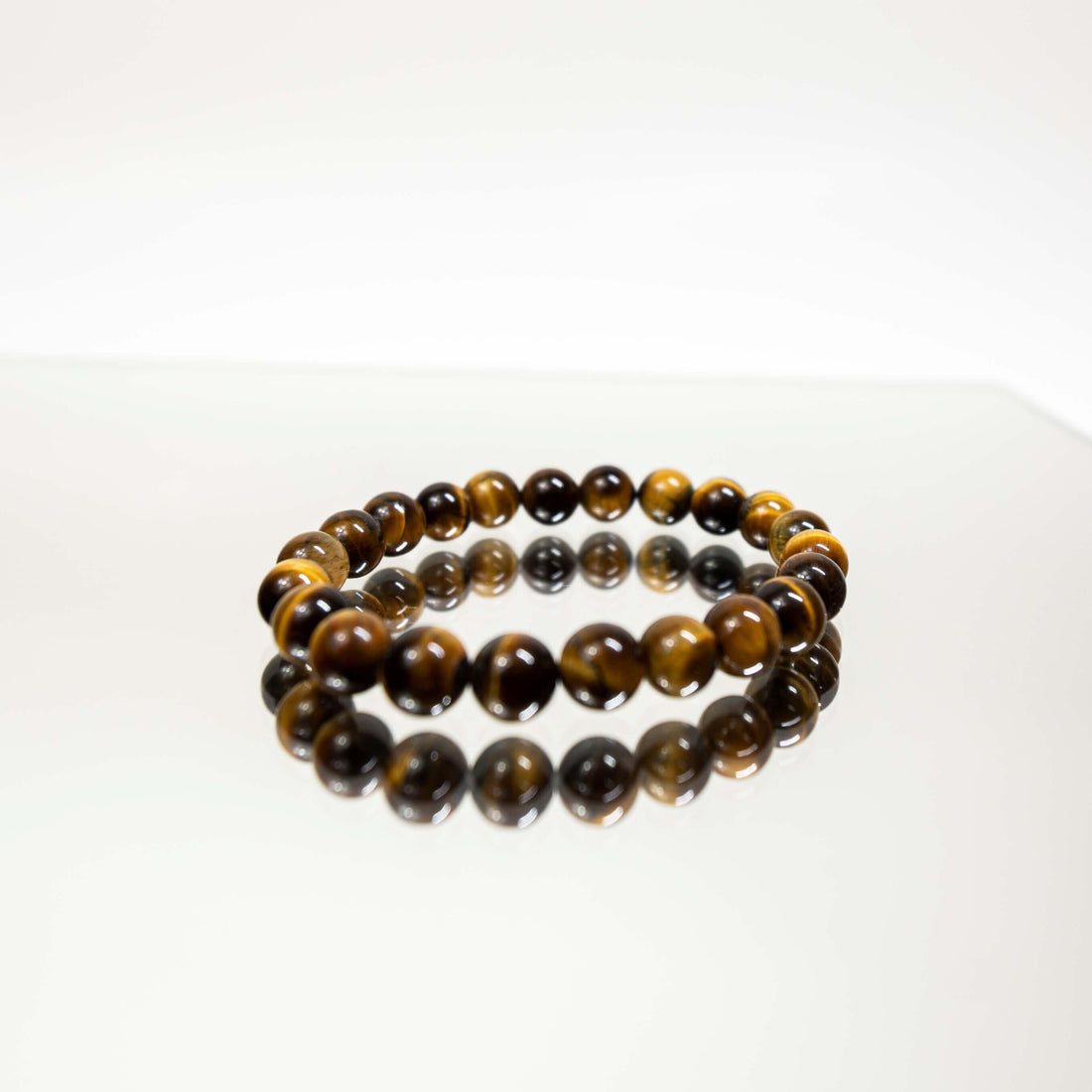Which Gemstones Should Not Be Put In Water?
Cleansing gemstones with water is a powerful way to energetically cleanse them; however, there are some that should not be cleansed with water.
So, which gemstones should not be put in water? Any that is a 5 or below on the Mohs harness scale should not be put in water. These gemstones dissolve or crack if left in water for an extended amount of time. Some harder gemstones should also be kept out of water. These include gemstones that contain minerals that can rust or can release toxins in water.
Within these guidelines, there are other exceptions to consider when getting gemstones wet. Also included are tips and tricks to still use the element of water to cleanse your gemstones, and avoid the damaging effect that they have on your precious stones.
What is the Mohs Hardness Scale?
The Mohs Hardness scale is a scale from 1-10 that tests the hardness of certain minerals by testing the resistance of those minerals. This is done by using two minerals together, and seeing which mineral either scratches the other causing damage, or which one sustains damage. The harder the mineral, the higher on the Mohs Hardness scale it is.
This scale is relevant when looking at gemstones and their water tolerance because the softer the material, the more likely it is to be damaged by water. These are gemstones that fall below 5 on the Mohs scale, and the closer to 0 they are, the more sensitive to water them usually are.
Here is a chart of the Mohs hardness scale ranging from 1-10, starting from the softest, and scaling up to the hardest. You can see from the list, some of the more commonly used gemstones should be kept out of water are: Angelite, Azurite, Fluorite, Lepidolite, Selenite, and Malachite.
|
1 |
Talc (the softest mineral on earth) |
|
2-3 |
Lepidolite, Pearl, Selenite, Amber, Chrysocolla, Copper, Gold, Gypsum, Halite (Rock Salt), Silver |
|
3-4 |
Angelite, Azurite, Coral, Jet stone, Malachite, Calcite, Celestite, Cerussite |
|
4-5 |
Fluorite, Ammolite, Larimar, Charoite, Rhodocrosite |
|
5-6 |
Cats Eye, Lapis Lazuli, Hematite, Obsidian, Opal, Rhodonite, Sodalite, Turquoise, Apatite, Apophyllite, Chrome/Star Diopside, Haemetite |
|
6-7 |
Amazonite, Bloodstone, Carnelian, Jade, Kyanite, Labradorite, Moonstone, Opalite, Peridot, Pyrite, Tourmaline, Chalcedony, Chrysoprase, Orthoclase feldspar, Zircon |
|
7-8 |
Agate, Amethyst, Aventurine, Citrine, Garnet, Jasper, Mookaite, Quartz, Rose Quartz, Smoky Quartz, Onyx, Tiger Eye, Tourmaline, Ametrine, Danburite, Kunzite, Rutile Quartz |
|
8-9 |
Aquamarine, Beryl, Emerald, Goshenite, Morganite, Topaz |
|
9-10 |
Corundum, Ruby, Sapphire |
|
10 |
Diamond |
Gemstones that are hard, but should also be kept out of water
The Mohs scale alone cannot be the sole source for which gemstones to keep out of the reach of water. Gemstones are a combination of various minerals, and some of the minerals in harder gemstones will still get damaged if being left in water for long periods of time. Listed below are the harder gemstones that should not be exposed to water, or left in moist environments:
Magnetite (Lodestone)
Magnetite is a 5.5–6.5 on the Mohs Hardness scale, but should not have contact with water. This is because Magnetite is an iron ore, and metal that is exposed to water can rust.
Lodestone is the same thing as Magnetite, but the difference is that Lodestone is naturally magnetized and attracts other pieces of iron to it. It has been used throughout history to help early civilizations as a navigation tool, and has been used in ancient healing ceremonies due to its strong energetic effect on people.
Very similar to Magnetite, Hematite is a 5.5-6.5 on the Mohs Hardness scale but should be kept away from water because it is an iron oxide that rusts when it comes in contact with water.
Tangerine Quartz
Using water with quartz crystal is almost always harmless, with one exception: Tangerine Quartz. This is because the mineral that gives this quartz crystal its beautiful orange glow is iron oxide. As you have already read, iron and water is not a happy mix, and your tangerine quartz may start to fade, turn a different color, or that beautiful orange may rub off.
Most Jade can be used with running water, but should not be submerged in water for long periods of time. The water should also be completely free of chlorine, and other chemicals, as this stone is very sensitive. If you do have to get your jade wet, wipe it off with a dry towel and try not to let it air dry, as this can cause damage to its surface.
Commonly Used Gemstones that Are Safe to Put In Water
Hard Gemstones that are Safe in Water:
- Most Quartz Crystals: Clear Quartz, Amethyst, Smoky Quartz, Rose Quartz, Citrine, Snow Quartz
- Agate
- Aventurine
- Jasper
- Tiger’s Eye
Soft Gemstones that are Safe in Water
Because it is a resin, and a softer crystal on the Mohs Harness scale, it is safe to say that it should not be put in water. But, from my experience, all my amber has been fine in water and I use water regularly with it. This is your call to make, and you can experiment with stones that you are not overly attached to.
Jet stone is a mineraloid that originated as a piece of wood, which has been compressed into the earth and turned into gemstone over a long period of time. Even though it is a 2.5 and 4 on the Mohs scale, hard jet — which was formed by carbon compression and salt water — will not get damaged by exposure to water. Soft jet — which was formed by carbon compression and fresh water — may be damaged by long exposure to water, although it will usually be fine.
Chrysocolla
This stone is strongly correlated with the element of water, so I like to use water to cleanse it. It is a softer stone, but I have found that running it under lukewarm water for brief periods of time does not do damage to it. Again, use your own judgement to decide if you want to expose your softer stones to water. If you do put Chrysocolla in water, you should dispose of the water, as Chrysocolla can make water toxic.
Ways to Use Water with Water-sensitive Gemstones So That They Won’t Get Damaged
If you are set on using water to cleanse your gemstones, here are some ways that you can still use the element of water, but can keep your gemstones safe from damage.
No-contact water method
Place a glass of water next to the crystal overnight. This especially works well if you put your crystal and the glass of water on the windowsill to be exposed to the light of the moon – particularly the full moon. Water your plants with the water the next day.
Lightly mist them
Fill a spray bottle with water and, from a distance, spritz the water in the air so that the gemstones are misted with very fine droplets of water. This most likely will not damage your gemstones by cracking or rusting, if you don’t over-do it. Let air dry or place in direct sunlight for 15 minutes to dry off and to get a nice charge of sunlight.
Be sure to filter the water so that other minerals are not drying on the surface of your gemstones or crystals. Also, you can soften the water by adding a clear quartz crystal to the water bottle. This will also give the crystal a nice boost of an energetic cleanse.
If you have gemstones that are very precious to you, and you want to avoid them getting damaged at all costs, I would skip water cleansing altogether – just to be safe.
Related Questions
Are there gemstones that sometimes can get wet, and sometimes can’t? Yes, there are! A good example of this is Opal. It is commonly believed that Opals will crack if they get wet, which is most often not true. Solid opals should not get damaged by water, and actually they themselves contain a small amount of water in them.
However, opals that have been layered, and are not solid, will crack and get damaged by long-term exposure to water. They can even begin to change in translucence and turn grey in color. Layered opals are usually found in jewelry, where they are layered with quartz, clear glass or plastic.
But because Opals are precious and rare, I would not take the chance, and keep water away from it.
Is there a way to reverse water damage to a crystal? Unfortunately, no there is not. Once a crystal is damaged, it cannot be undone. You can take it to a jeweler to polish or alter it in some way — but without making alteration, it cannot be repaired. This is why it is so important to do your research, and experiment on smaller gemstones or stones that you are not very attached to. When in doubt, use another way to cleanse your stones.
In general, submerging any gemstone in water will cause them to lose lustre. Do not use jewelry cleaner. Use a soft cloth to wipe away any debris and a soft microfiber jewelry cloth is perfect to buff the stones.
Thank you for visiting my website at Lorna Gemstone Jewelry Please follow me on Instagram @lornagemstonejewelry.

